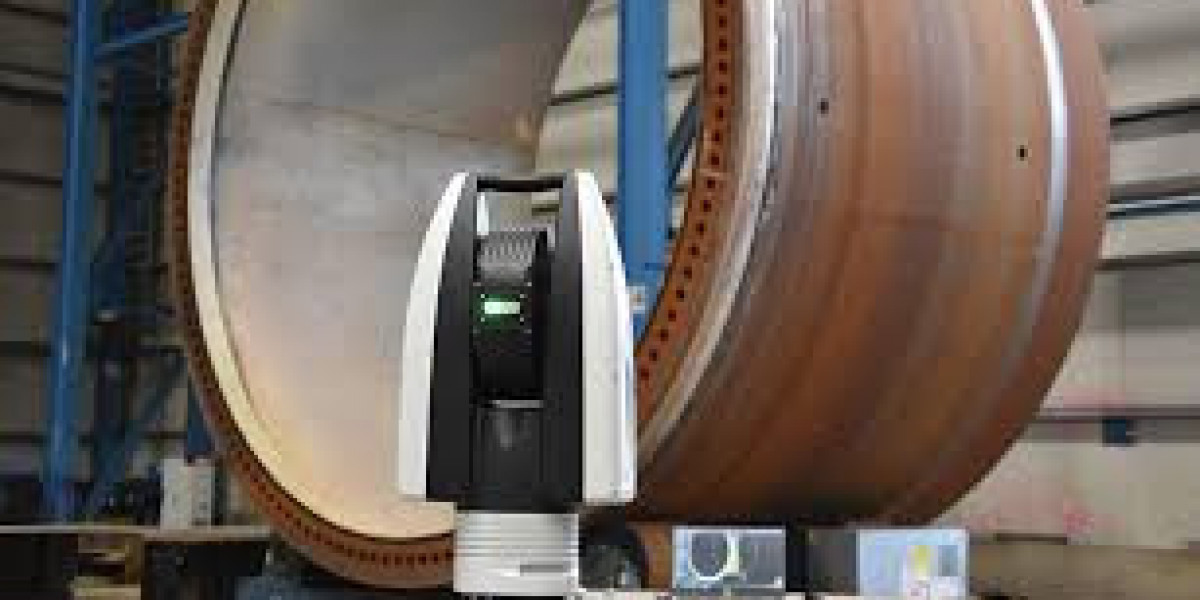In modern industry, precision is everything. From aerospace to automotive manufacturing, ensuring exact measurements and proper alignment can mean the difference between a flawless product and costly errors. Laser Trackers have emerged as game-changing tools, transforming how companies approach industrial measurement and alignment with unmatched accuracy and efficiency.
This article explores the role of laser trackers in industrial applications, their benefits, and how businesses can leverage them to improve productivity, quality, and operational efficiency.
What Are Laser Trackers?
Laser trackers are precision measurement instruments that use a laser beam to determine the exact three-dimensional coordinates of a target point. They are capable of measuring large-scale components and assemblies with high accuracy, often within microns.
Unlike traditional measurement tools, laser trackers provide both mobility and precision, making them suitable for measuring objects that are too large or complex for conventional instruments.
The Need for Precision in Industrial Measurement
Accurate measurement is critical across multiple industries:
1. Aerospace Manufacturing
Aircraft assembly requires exact tolerances to ensure safety, performance, and compliance with regulatory standards. Even small deviations can compromise aerodynamics or structural integrity.
2. Automotive Production
High-volume automotive assembly relies on precise alignment of chassis, engines, and body components. Laser trackers ensure that every part fits perfectly, reducing rework and improving efficiency.
3. Heavy Machinery and Shipbuilding
Large-scale equipment and ships require precise measurement for structural alignment. Laser trackers can handle large distances and complex geometries that traditional tools cannot.
How Laser Trackers Work
Laser trackers operate using a laser beam that is reflected off a target, such as a retroreflective sphere or prism. The system tracks the movement of the target in real time and calculates its exact three-dimensional coordinates.
1. Rotational and Linear Measurement
Modern laser trackers can measure both linear distances and rotational angles, providing a complete picture of part geometry and alignment.
2. Real-Time Feedback
The system provides immediate measurement feedback, allowing operators to adjust components during assembly or alignment processes.
3. High Accuracy and Reliability
Laser trackers are capable of achieving sub-millimeter accuracy over large distances, making them ideal for critical applications where precision is non-negotiable.
Benefits of Using Laser Trackers in Industry
Implementing laser trackers offers a range of advantages for industrial operations:
1. Enhanced Accuracy
Laser trackers provide precise measurements over long distances, ensuring components are aligned to exact specifications and minimizing errors.
2. Increased Efficiency
Real-time measurement allows teams to make adjustments on the spot, reducing the need for repeated measurements or rework.
3. Flexibility for Large Components
Laser trackers can handle large assemblies and structures, making them ideal for industries such as aerospace, automotive, and heavy machinery.
4. Improved Quality Control
Consistent, accurate measurements lead to higher-quality products and reduce the risk of defects or misalignments.
Applications of Laser Trackers
Laser trackers are versatile tools with applications across multiple industries:
1. Aerospace Assembly and Maintenance
Aircraft wings, fuselage sections, and landing gear components can be precisely measured and aligned using laser trackers, ensuring safe and efficient assembly.
2. Automotive Manufacturing
From engine alignment to body assembly, laser trackers help automotive engineers maintain precise tolerances and reduce production errors.
3. Industrial Equipment Calibration
Heavy machinery, turbines, and press systems require accurate calibration. Laser trackers ensure components are correctly aligned for optimal performance.
4. Large-Scale Construction
In construction and shipbuilding, laser trackers measure large assemblies and structural components, improving precision and reducing material waste.
Laser Trackers vs Traditional Measurement Tools
Traditional measurement tools, like tape measures, dial indicators, or CMMs, have limitations when measuring large or complex structures.
1. Range Limitations
Tape measures and CMMs cannot easily cover large distances, whereas laser trackers can measure several meters accurately without repositioning.
2. Time Efficiency
Laser trackers provide rapid measurements in real time, significantly reducing setup and inspection time compared to manual methods.
3. Adaptability
Laser trackers can measure moving targets and complex geometries, which traditional tools struggle with.
Integration with Modern Manufacturing Technologies
Laser trackers are increasingly integrated with advanced manufacturing technologies:
1. CAD and PLM Systems
Laser tracker measurements can feed directly into CAD and product lifecycle management (PLM) systems, streamlining design verification and assembly planning.
2. Robotic Systems
Robots can use laser tracker data to adjust assembly operations in real time, ensuring precise alignment without human intervention.
3. Quality Analytics
Laser trackers enable data collection for statistical process control and quality analytics, helping businesses make informed decisions about production processes.
Challenges and Considerations
Despite their advantages, implementing laser trackers requires careful planning:
1. Initial Investment
High-precision laser trackers can be costly, though their ROI is realized through increased efficiency and reduced rework.
2. Operator Training
Proper training is essential to fully leverage the capabilities of laser trackers and ensure accurate measurements.
3. Environmental Factors
Dust, vibrations, and temperature fluctuations can affect measurement accuracy. Using laser trackers in controlled environments or with proper mitigation measures is crucial.
Future Trends in Laser Tracker Technology
Laser trackers continue to evolve, with emerging trends enhancing their functionality:
1. Wireless and Portable Systems
Modern trackers offer wireless connectivity and portability, making them easier to use in dynamic or large-scale industrial environments.
2. Enhanced Accuracy and Speed
Technological improvements are increasing both measurement speed and precision, enabling real-time feedback for even more complex applications.
3. Integration with AI and Machine Learning
Future systems may leverage AI to predict alignment adjustments, optimize workflows, and reduce human error further.
Choosing the Right Laser Tracker Provider
Selecting a reliable provider is crucial for maximizing the benefits of laser trackers:
1. Experience and Expertise
Choose a company with experience in providing laser tracker solutions tailored to your industry and measurement needs.
2. Technical Support and Training
Ensure the provider offers training for operators and ongoing technical support to maintain optimal performance.
3. Custom Solutions
A good provider can deliver bespoke setups and configurations, allowing you to measure unique or challenging components efficiently.
For businesses looking for professional guidance, companies offering specialized Laser Trackers can help select, deploy, and maintain the ideal solution for industrial measurement and alignment.
Conclusion: Revolutionizing Industrial Measurement
Laser trackers are transforming industrial measurement and alignment, offering unparalleled precision, efficiency, and flexibility. By integrating laser tracker technology into manufacturing, aerospace, automotive, and heavy industry operations, businesses can reduce errors, accelerate production, and enhance overall product quality.







